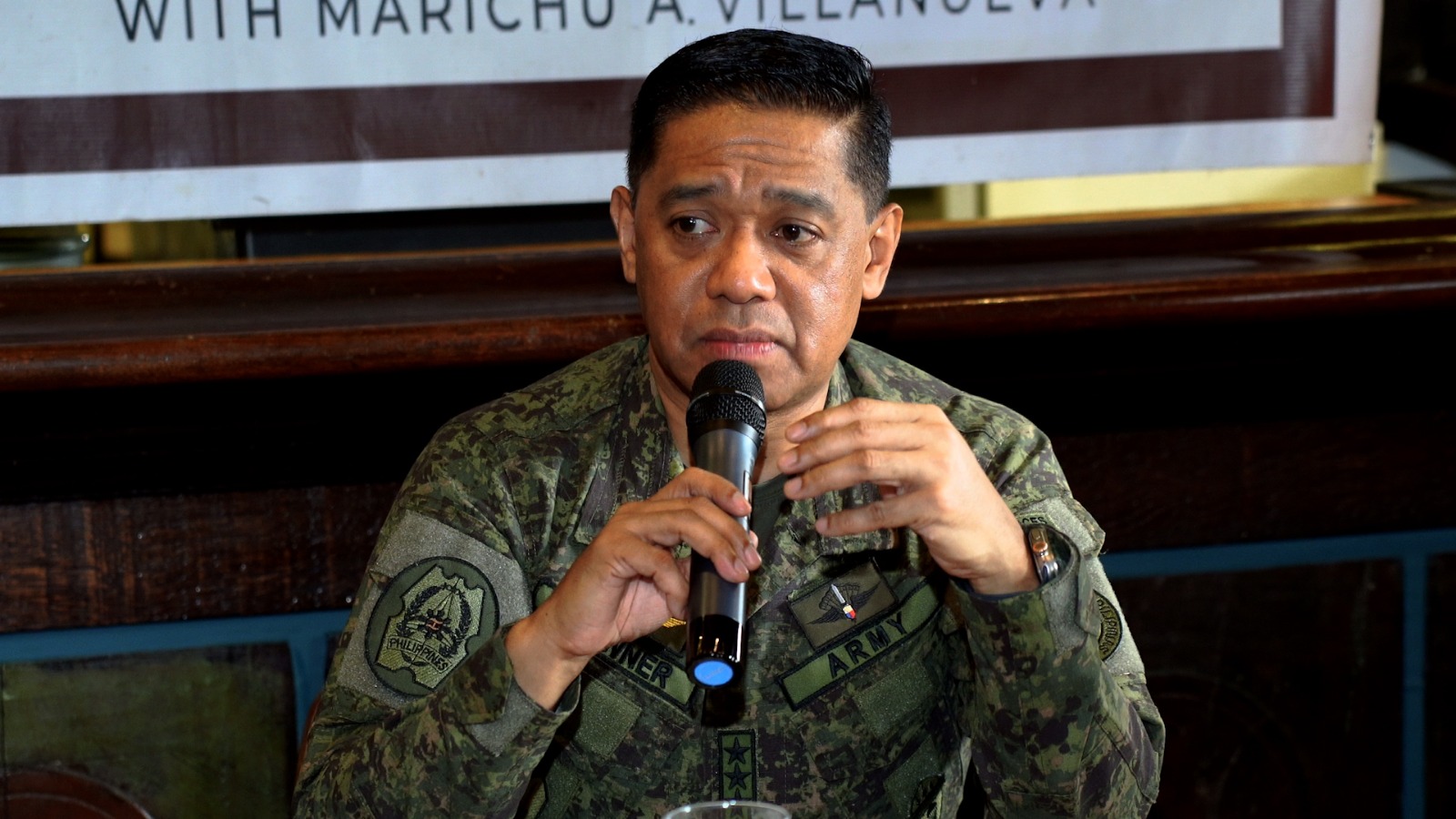Marcos to AFP: Think of new ways to fight threat groups

Gen. Romeo Brawner Jr., Chief of Staff, Armed Forces of the Philippines during the Kapihan sa Manila Bay, October 25, 2023. | PHOTO: Arnel Tacson / INQUIRER.net
MANILA, Philippines — President Ferdinand Marcos Jr. has ordered the leadership of the Armed Forces of the Philippines to “reconfigure its approach” in dealing with different threat groups in order “to be more effective,” AFP chief of staff Gen. Romeo Brawner Jr. said on Monday.
The President said over the weekend that there were no more active guerrilla fronts of the New People’s Army (NPA), the armed wing of the Communist Party of the Philippines (CPP). But the CPP dismissed that claim, saying Mr. Marcos “is in dreamland.”
Talking about Marcos’ first command conference this year, Brawner said in a news conference: “For his guidance, the president said that we needed to reconfigure our approaches dealing with different threat groups.”
The AFP is dealing with various threats, including communist rebels, terrorists, and the dispute with China in the West Philippine Sea.
“We have to think of new ways in dealing with them, innovative ways… When dealing with these threats, [the President] said we need to invoke a whole of nation approach, we need the support of our citizens and the support of our international allies and partners,” Brawner added.
But he said Marcos did not give any particular orders regarding the West Philippine Sea not to micromanage the military.
“He said in his previous speeches that there will be a paradigm shift, but he did not give any specifics because he mentioned that he doesn’t want to micromanage,” the military chief said.
‘Weakened’ NPA fronts
Despite the president’s earlier assertion on Saturday, Brawner said there were still 11 NPA guerrilla fronts with an estimated total of 1,500 fighters, although these fronts have been “weakened.”
The military defines a weakened guerrilla front as being no longer able to recruit new cadres and boost its resources for its armed struggle.
“Even if we were able to decrease the number of guerrilla fronts, there are still NPA formations out there. They’re trying to recover the areas that they have lost,” Brawner said.
Commenting on Marcos’ remarks, CPP spokesperson Marco Valbuena, in a statement on Sunday, said: “Marcos Jr. is in dreamland when he claims there are no more active NPA guerrilla fronts. In truth, the NPA remains active in 14 regional commands across the country, each with a number of guerrilla fronts.”
Undersecretary Ernesto Torres Jr., executive director of the National Task Force to End Local Communist Armed Conflict, had also said earlier this month that there were 14 NPA guerrilla fronts still operating.
“With his claims, Marcos should answer why it is that the AFP continues to be focused and deployed mainly against the NPA instead of gearing up to defend the country against US-China armed conflicts,” Valbuena said.
‘Far from defeated’
Valbuena wondered why around 60,000 to 70,000 combat troops of the AFP, together with counterinsurgency units of the Philippine National Police, are regularly deployed against the rebels.
The government also continues to provide huge budgets for its counterinsurgency operations, he added.
“Despite having suffered setbacks over the past years, the NPA is far from defeated,” Valbuena said.
But the military has stepped up its offensive recently, launching a Christmas Day attack on a rebel camp in Malaybalay City, Bukidnon, as the rebels, who had unilaterally declared a ceasefire, were preparing for the CPP’s 55th anniversary on Dec. 26 last year.
Before the return to hostilities, the government and the National Democratic Front of the Philippines (NDFP), the political arm of the insurgents, had already agreed to resume peace negotiations, issuing a joint communiqué on Nov. 28 on reviving the talks.
NDFP leaders had noted then the significance of the talks being possibly revived on the watch of the son and namesake of the late strongman Ferdinand Marcos Sr., considering that the rebellion was organized to oppose his regime.
On March 29, the NPA will mark its 55th anniversary, a milestone indicating that the communist rebellion has spanned more than half a century.